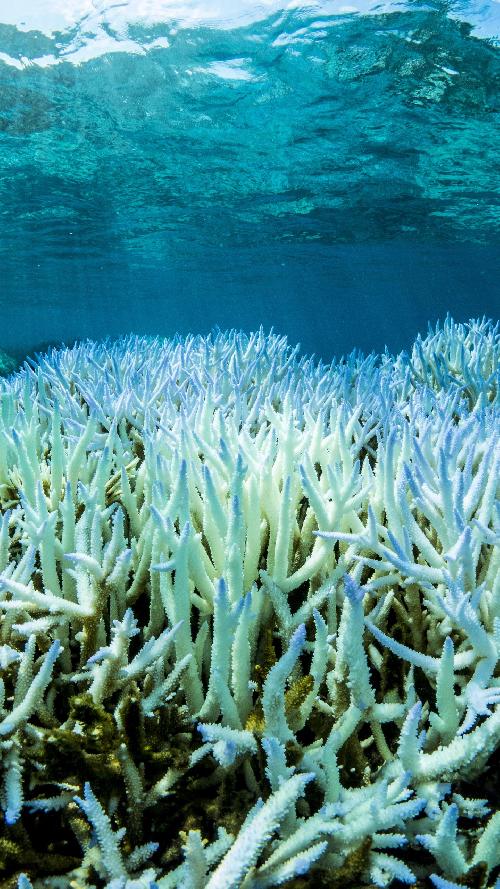Corals within the Great Barrier Reef (GBR) have developed a thermal tolerance mechanism to adapt to sharp increases in sea surface temperatures in recent decades, but near-future temperature increases of as little as 0.5°C may result in this protective mechanism being lost, a new study finds. The results suggest that the occurrence of coral bleaching could dramatically increase in the near future. For optimal coral health and growth, a symbiotic relationship with algae-likes species called dinoflagellates that live within the coral structures takes place. Coral bleaching is the loss of this mutualism, where, upon heat stress, the dinoflagellates are expelled and the coral turns colorless, growing at much slower rates. To gain more insights into the temperature thresholds of bleaching, Tracy Ainsworth et al. analyzed 27 years of satellite-based sea surface temperature records of the GBR and identified 372 thermal stress events capable of causing bleaching. They established the maximum monthly mean (MMM) temperature for each region as a baseline, and the bleaching threshold as 2°C above the MMM. The authors found that when sea surface temperatures rose to right below the threshold before decreasing again ("protective scenario"), a coral's thermal tolerance to subsequent increases above the threshold temperature increased, resulting in reduced bleaching and coral cell death. In contrast, corals that experienced increases above the threshold with no pre-stress or recovery period were more likely to experience bleaching. Gene expression profiles of corals under the protective scenario were associated with lower levels of localized cell death, hinting at an underlying thermal tolerance mechanism. The authors then simulated coral responses to future temperatures, based on historical temperatures. They predict that most of the corals that have only experienced the protective scenario to date will begin to experience single and repetitive bleaching events when sea surface temperatures are approximately 0.5°C higher than present - which is expected to occur within four decades based on historical warming rates. According to their estimations, where currently 75% of GBR coral benefit from the protective scenario, if sea surface temperatures increase by 2°C (as could occur by 2100 under current warming trajectories), the proportion of corals benefitting from the protective scenario falls by roughly two-thirds, to only 22%, implying that future thermal stress events will become far more lethal for corals.
 Coral bleaching. This material relates to a paper that appeared in the 15 April, issue of Science, published by AAAS. The paper, by T.D. Ainsworth at James Cook University in Townsville, QLD, Australia, and colleagues was titled, "Climate change disables coral bleaching protection on the Great Barrier Reef." Credit: Peter Mumby
Coral bleaching. This material relates to a paper that appeared in the 15 April, issue of Science, published by AAAS. The paper, by T.D. Ainsworth at James Cook University in Townsville, QLD, Australia, and colleagues was titled, "Climate change disables coral bleaching protection on the Great Barrier Reef." Credit: Peter Mumby
source: American Association for the Advancement of Science